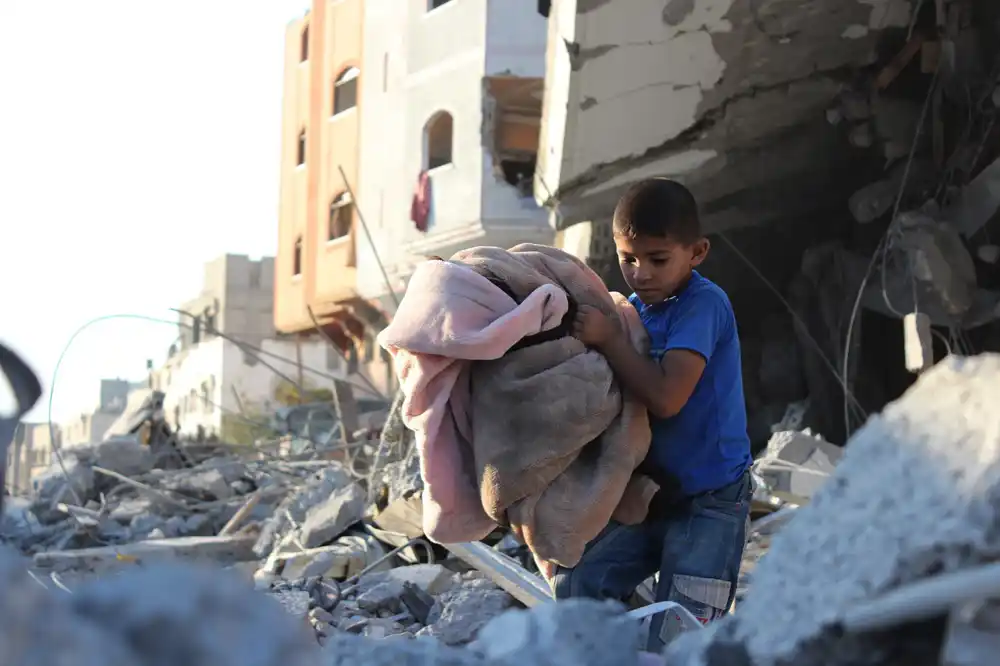The Gaza Strip is bleeding.
Since October 2023, Israel’s war on Gaza has taken the lives of tens of thousands of Palestinians. Men and women. Parents and children. Entire families.
But behind every number is a name. Behind every statistic, there’s a face. A mother searching for her child. A father digging through rubble. A home turned to dust.
You’ve probably seen the headlines. Maybe you’ve come across a video or two on social media. But in a world full of fast news and forgotten hashtags, it’s hard to know what’s real and what’s just noise.
This post is here to cut through that noise.
We’re tracking the death toll in Gaza, not just through official numbers, but also through independent studies, field reports, and stories from the ground. As the war continues, this page will be updated with the latest findings and the real human cost of what’s happening.
Because documenting the truth matters.
If you’re trying to understand the death toll in Palestine so far, or searching for real facts beyond the headlines, this is your place to begin.
Latest Death Toll in Gaza (Reported Worldwide)
Since October 2023, the Gaza war has claimed tens of thousands of lives. According to the Gaza Ministry of Health, at least 60,034 Palestinians have been killed by Israeli forces.
But that’s just the official figure.
A separate, independent study led by Michael Spagat, a war conflict researcher at the University of London, paints a much darker picture. His team found that the actual death toll in Gaza could be 41% higher than what’s been reported by Gaza’s Health Ministry.
Their estimate? Over 80,000 Palestinians were killed between October 7, 2023, and January 5, 2025.
And if that trend continued beyond January, the total death toll in the Gaza Strip could now be nearing 100,000 lives lost.
Let that sink in.
Each number is a name. A home. A voice. A story cut short.
This is not just a war. It’s a humanitarian catastrophe. And it’s getting harder to track, as news cycles move on and attention shifts elsewhere.
How Accurate is the Gaza Death Toll?
If you’ve ever wondered how the death toll in Gaza is tracked with so much destruction around.
With numbers rising every day, many people ask the same question: how accurate are these figures?
The Gaza Ministry of Health is the main authority documenting casualties. Every person who dies or gets injured in the Gaza Strip is added to an official record. These records include the victim’s name, age, gender, and national ID number. It’s not just a tally, it’s a detailed list.
According to the researchers these records are not only detailed, but verifiable. In fact, they already have been.
In February 2024, his team cross-checked thousands of obituaries shared on social media with the Ministry’s official records.
They found that there were no inflated numbers. No made-up names. In fact, it was the opposite. Many names that appeared in public memorials were missing from the official count.
That means the real death toll in Palestine could be even higher than what the world sees right now.
Yes, the Ministry operates under the Hamas-led government, which many Western countries label as a terrorist organization. But international experts still trust its casualty tracking.
Because numbers don’t lie, and in this case, the evidence speaks louder than politics.
So when you read about the death toll in Gaza over time, understand that the official count may be an undercount of a much larger tragedy.
How Is the Death Toll in Gaza Calculated?
In the early months of the Gaza war, the Ministry of Health tracked deaths the most direct way possible by counting the bodies that reached hospitals. Most of them came with names, ID numbers, and details.
By May 2024, the ministry began including unidentified bodies in the official toll. These accounted for nearly a third of the total deaths. Then in October 2024, they again started counting only those who could be fully identified.
This means the real death toll in Gaza is likely much higher than the numbers we see in headlines.
The independent study also confirmed that Gaza’s electronic death records were once highly reliable. But that changed when Israeli airstrikes destroyed hospitals, killed medical staff, and cut off digital networks. Record-keeping became harder. And so did knowing the truth.
That’s where independent researchers stepped in.
The fresh study was conducted without relying on Gaza’s Health Ministry. In partnership with the Palestinian Center for Policy and Survey Research (PSR), the team gathered new data.
Their approach was personal.
They surveyed 2,000 households across Gaza, families forced to flee their homes and now living in refugee camps and tents in Rafah, northern Gaza, and the south. These families had already lost so much. But they shared their stories to help the world understand the full picture.
Because Israel blocks access to Gaza for journalists, researchers, and human rights organizations, this local partnership became the only way to collect on-the-ground facts.
One of the researchers explained, “We didn’t go into Gaza. We were already there, through our partner organization.”
This work doesn’t just offer new numbers. It tells the real story of Gaza, from the people still surviving through it.
In March 2025, Reuters reviewed earlier casualty data and found that over 1,200 families had been completely wiped out, some with 10, 12, or even 14 members.
The Washington Post has also published a list of thousands of names provided by the Gaza Health Ministry. Each name is a reminder. Each line, a life cut short.
This isn’t just about numbers.
It’s about families erased, children buried before their time, and the world struggling to keep up with the truth.
Behind every statistic is a story you may never hear unless we keep digging them.
That’s why tracking the death toll in Gaza is not just a technical task. It’s how we honor the lives that were lost, and hold the world accountable for what comes next.


